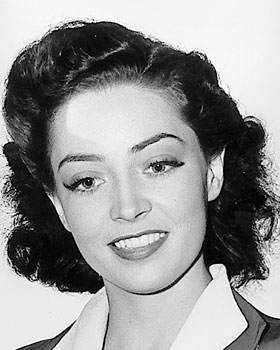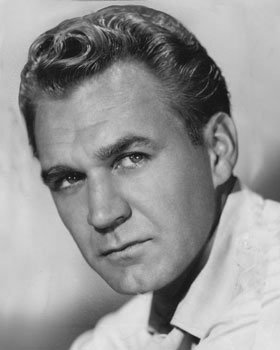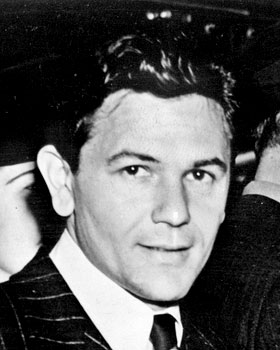Marie Windsor
Marie Windsor made a career playing strong, independent women in such film noir classics as "Force of Evil," "The Killing" and "The Narrow Margin."
Windsor appeared in 76 feature films opposite such leading men as Marlon Brando, David Niven, George Raft and James Garner. She made guest appearances on more than 100 television shows (including "Fantasy Island," "Gunsmoke" and "Murder, She Wrote") and performed in dozens of stage productions. The Los Angeles Drama Critics voted her best actress for "The Bar Off Melrose" in 1987.
After winning two local beauty pageants and majoring in drama at Brigham Young University, she headed for Hollywood in 1940 to study with Maria Ouspenskaya.
Windsor took a job as a cigarette girl at Mocambo, a Sunset Strip nightclub, where, one night, she was weeping about her inability to pay the rent. A club patron—movie producer Arthur Hornblow Jr.—noticed her distress and recommended her for a part in the musical "All-American Co-Ed" for which she auditioned later that week. Windsor went on to win a role.
After appearing in some bit parts, Windsor headed for New York, where she acted in more than 300 radio dramas. She played a femme fatale in Broadway's "Follow the Girls" which was followed by a contract at MGM. The studio cast her in movies ranging from "Hellfire" (1949), one of her favorites, to Abraham Polonsky's film noir classic "Force of Evil," opposite John Garfield.
Windsor's best remembered role was that of a gangster's widow in Richard Fleischer's low-budget sleeper "The Narrow Margin" (1952). That caught the attention of a young Stanley Kubrick, who cast her as an unfaithful wife in "The Killing" (1956). The film, considered one of her best, won her the best supporting actress award from Look Magazine.
Critics noted that Windsor often rose above her material. Appearing in second-string films such as "Outlaw Women" (1952), the sci-fi "Cat Women of the Moon" (1953) and "Swamp Women" (1956), she was dubbed "Queen of the B's". And, at 5 foot 9, the actress often towered over her male co-stars—never regarding herself as beautiful.
"I wish I'd been more secure and had accepted myself as I was," she told Jim Meyer in Classic Images, an Iowa-based newspaper of classic film, last year. "I feel the same way about my name. In the earlier days, studios and agents insisted you change your name even if it wasn't too long for a marquee. . . . I've survived more on guts than I ever did on self-confidence."
Related stars
|
|





One thought about Marie Windsor
Share a thought about Marie Windsor